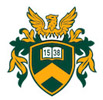Novák Ádám (szerk.): Fontes Memoriae Hungariae III. Varsóban őrzött magyar vonatkozású oklevelek, 1439–1489. Közreadja: Novák Ádám, Tóth Orsolya és Tóth Péter (Debrecen, 2019)
Sobiesław Szybkowski: Polish-Hungarian Relations between 1437 and 1490. A Short Introduction
V Sobiesław Szybkowski Polish-Hungarian Relations between 1437 and 1490. A Short Introduction The period between 1434 and 1437 is clearly a watershed in the relations between the Kingdom of Poland (which was in personal union with the Grand Duchy of Lithuania) and the Kingdom of Hungary. The death of Vladislaus II Jagiełło, the long-time King of Poland and Supreme Duke of Lithuania on 31 May 1434 marks the beginning of this period. Similarly, its endpoint is also set by the death of a perhaps even more significant ruler, namely that of Sigismund of Luxemburg, Holy Roman Emperor and King of Germany, Hungary and Bohemia, who passed away on 9 December 1437.1 The deaths of Vladislaus II and Sigismund were over three years apart and during this time Sigismund remained an active player on the European political scene. Therefore, this period cannot be completely ignored when one tries to characterize the relations between Poland and Hungary after 1437, especially because certain political concepts which had a significant impact on the relations between the two kingdoms further on, were born during this short era. It needs to be emphasized that Sigismund’s political partner was not the Polish king, Vladislaus III, who was 10 at the time (he was born in 1424),2 but rather the Polish magnates, noblemen and Sophia of Halshany, the queen dowager. After Vladislaus II’s older son was crowned in the summer of 1434, they acted as regents. This situation continued until December 1438, when Vladislaus III came of age and he himself began to rule.3 The rep resentatives of the Polish political elites, even though they did not agree as far as foreign policy was concerned, believed the relations with Sigismund to be of significant importance. This was mainly the case because Sigismund provided 1 Joannis Dlugossii Annales seu Cronicae incliti Regni Poloniae. (further: Długosz) Lib. XI/XII . Ed. Baczkowski, Krzysztof et al. Varsoviae, 2001. 115., 179.; Krzyżaniakowa, Jadwiga; Ochmański, Jerzy: Władysław II Jagiełło . Wrocław, 1990. 302.; Baum, Wilhem: Kaiser Sigismund. Hus, Konstanz und Türkenkriege. Graz, 1993. 293.; Hoensch, Jörg K.: Kaiser Sigismund. Herrscher an der Schwel le zur neuzeit 1368–1437. München, 1996. 461.; Tęgowski, Jan: Pierwsze pokolenia Giedymino wiczów. Poznań–Wrocław, 1999. 131. 2 Tęgowski, 1999. 136. 3 Cf. Sobociński, Władysław: Historia rządów opiekuńczych w Polsce. Czasopismo Prawno-Histo ryczne 2. (1949). 234, 292, 286–296, 304–305, 329–330.; Bardach, Juliusz: Historia państwa i pra wa Polski. Vol. 1. Warszawa, 1964. 438–439.; Kurtyka, Janusz: Tęczyńscy. Studium z dziejów polskiej elity możnowładczej w średniowieczu . Kraków, 1997. 299–317.; Sperka, Jerzy: Szafrańcowie herbu Stary Koń. Z dziejów kariery i awansu w późnośredniowiecznej Polsce. Katowice, 2001. 242–259, 348–354.; Czwojdrak, Bożena: Rogowscy herbu Działosza, podskarbiowie królewscy. Studium z dzie jów możnowładztwa w drugiej połowie XIV i w XV wieku. Katowice, 2001. 62–66.; Eadem: Zofia Holszańska. Studium o dworze i roli królowej w późnośredniowiecznej Polsce. Warszawa, 2012. 41–47.
